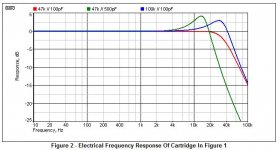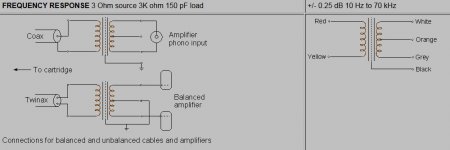Just one of several attempts to deride the original poster's (GKF) observation that lifting the speaker cables form the floor somehow improves the clarity of the sound. And my observation that he might be picking up an interesting phenomenen. Or at least something I will consider with an open mind. 🙂No-one accused you of being the village idiot, but you have demonstrated an inability to read or understand well accepted concepts of line impedance v frequency. My dad ( a POTS engineer) taught me this 55 years ago!
Your post above is a complete miss-mash of confused ideas and mis-understandings. Please go and study electronics.
I can't be a###d to attempt to explain - others have already tried.
TBH, I always go for the science and mathematics. You can calculate inductive and capacitative effects with badly terminated cables.
Twisted Pairs
Coaxial Cables
What I find is that most near 8 ohm speakers are driven by near 100 ohm cables. There is also a sloppy mix of balanced and unbalanced operation which a radio frequency engineer would plain avoid. Are these effects (because 1uH on a 5m cable is small) significant for audio frequencies? I really don't know.
There are some subtleties about self and mutual inductance (skin effect) with cables in power supply and RF applications. But there are people who believe that valve amplifiers (with output transformers that match impedance and do things to common-mode rejection ratio) sound better. 😕
The whole definition of "Earth" in amplifiers is often a bit vague. It's just a reference voltage from the centre of a toroidal transformer. And it might be quite noisy. Here, you see the Rotel RA-931 amp uses a simple diode bridge to the power amp output stage, and a more regulated supply to the op-amp preamp stage.
A lot of amplifiers and CD players rely on low source impedance and high load impedance to work correctly. It's a dodgy assumption, IMO.
I'm thinking that if GKF is picking up a real effect, it is something to do with common-mode noise finding its way into the amp.
Attachments
Last edited:
TBH, I always go for the science and mathematics. ...
What I find is that most near 8 ohm speakers are driven by near 100 ohm cables.
When you don't know what you're talking about, double down.
I hope that no-one reading this stuff takes seriously the absolutely incorrect mixing of characteristic impedance and load impedance, just because both have the units of ohms. Although system7 refuses to, I would still suggest that anyone interested in the subject look up and study carefully the definitive work in this area- Dick Greiner and Fred Davis, 35 years ago. Reality is far better than superstition.
Making a cable with 8 ohm characteristic impedance would be a bit impractical though. Not to mention useless...
Characteristic impedance is about power transfer. At low frequencies, lowest source impedance gives best power transfer into load, and cable Zc doesn't matter, only RI2 loss at high current. It is only at HF that you got to worry about matching if you want your power to get to the load where it is useful instead of being reflected and wreaking havoc.
OK... about cable lifters... what about parasitic capacitance between the cable and whatever is around ? This will change depending if the cable is surrounded 100% by air, or 50% air above and 50% floor/wood/tile/whatever dielectric below. Maybe the amp output stage cares (or maybe not).
Characteristic impedance is about power transfer. At low frequencies, lowest source impedance gives best power transfer into load, and cable Zc doesn't matter, only RI2 loss at high current. It is only at HF that you got to worry about matching if you want your power to get to the load where it is useful instead of being reflected and wreaking havoc.
OK... about cable lifters... what about parasitic capacitance between the cable and whatever is around ? This will change depending if the cable is surrounded 100% by air, or 50% air above and 50% floor/wood/tile/whatever dielectric below. Maybe the amp output stage cares (or maybe not).
OK... about cable lifters... what about parasitic capacitance between the cable and whatever is around ? This will change depending if the cable is surrounded 100% by air, or 50% air above and 50% floor/wood/tile/whatever dielectric below. Maybe the amp output stage cares (or maybe not).
Do a back of the envelope calculation.
My hunch tells me the effect would be at least 1000 times below the threshold that would warrant the effort of doing a napkin calculation, so I confess I'm too lazy for that 😀
My hunch tells me the effect would be at least 1000 times below the threshold that would warrant the effort of doing a napkin calculation, so I confess I'm too lazy for that 😀
You have excellent hunches! You're not as feu as your handle makes you out to be.😀
Let's continue looking at REAL cable issues in audio. Things that affect the sound. 🙂
Here's the frequency response issues with moving magnet pickup cartidges, which are around 500mH and 500 ohm output impedance into 47k load:
Magnetic Phono Pickup Cartridges
Even 100 pFs of cable capacitance does dramatic things.
And next, at some correct technique in matching a low impedance moving coil cartridge to a similar cable. By our own Morgan Jones, as it goes.
Sowter Type 8055
Back in the day, when I built phono preamps, I gave this sort of thing serious consideration. I got rid of the cable and put the preamp in the turntable case. I went for balanced input resistive load and equalised it later in the circuit. Sounded very good. 😎
So, whether you believe in effects being significant or not, you do it properly. Back of a beermat calculations can tell you what speaker cables will work best.
Twisted Pair | Electronics and Electrical Engineering Tools | EEWeb Community
You can work it out for yourself. Maybe.
Here's the frequency response issues with moving magnet pickup cartidges, which are around 500mH and 500 ohm output impedance into 47k load:
Magnetic Phono Pickup Cartridges
Even 100 pFs of cable capacitance does dramatic things.
And next, at some correct technique in matching a low impedance moving coil cartridge to a similar cable. By our own Morgan Jones, as it goes.
Sowter Type 8055
Back in the day, when I built phono preamps, I gave this sort of thing serious consideration. I got rid of the cable and put the preamp in the turntable case. I went for balanced input resistive load and equalised it later in the circuit. Sounded very good. 😎
So, whether you believe in effects being significant or not, you do it properly. Back of a beermat calculations can tell you what speaker cables will work best.
Twisted Pair | Electronics and Electrical Engineering Tools | EEWeb Community
You can work it out for yourself. Maybe.
Attachments
Let's not!
Let's rather answer the original poster - if there is anything further to be said.
Your phono exploits, which may well be commendable, have nothing to do with it!
Let's rather answer the original poster - if there is anything further to be said.
Your phono exploits, which may well be commendable, have nothing to do with it!
I have answered it.
If it's a significant observation about cable lifters, it's a common-mode noise pickup effect IMO. Could be mains hum or radio frequency breaking through.
The sort of thing that people setting up PA systems with long cables are careful about.
But the ideal cure might not be cable lifters. Effects could certainly be reduced with some correct technique on amplifiers and cables.
If it's a significant observation about cable lifters, it's a common-mode noise pickup effect IMO. Could be mains hum or radio frequency breaking through.
The sort of thing that people setting up PA systems with long cables are careful about.
But the ideal cure might not be cable lifters. Effects could certainly be reduced with some correct technique on amplifiers and cables.
Much as I dislike quoting wiki, here it does succinctly state how/why transmission line issues cannot apply here, cable lengths being a tiny fraction of wavelength:
Special cases of lossless transmission lines
Half wave length
ß is wavenumber, l is line length. For the special case where ßl=nπ where n is an integer (meaning that the length of the line is a multiple of half a wavelength), the expression reduces to the load impedance so that
Zin = ZL
for all n. This includes the case when n=0 , meaning that the length of the transmission line is negligibly small compared to the wavelength. The physical significance of this is that the transmission line can be ignored (i.e. treated as a wire) in either case.
Just treat the cables as wire, as numerous posters already clearly said. No transmission line here, move along move along.
Special cases of lossless transmission lines
Half wave length
ß is wavenumber, l is line length. For the special case where ßl=nπ where n is an integer (meaning that the length of the line is a multiple of half a wavelength), the expression reduces to the load impedance so that
Zin = ZL
for all n. This includes the case when n=0 , meaning that the length of the transmission line is negligibly small compared to the wavelength. The physical significance of this is that the transmission line can be ignored (i.e. treated as a wire) in either case.
Just treat the cables as wire, as numerous posters already clearly said. No transmission line here, move along move along.
Last edited:
Yes. Cable lifters are "silly" - trick is to understand fully what's going on, and use straightforward, efficient methods to eliminate any impact. There's a chap up the road who uses DSP and active speakers, who is able to get very competent sound - but it's nothing to do with cabling! The latter is long strands of spaghetti thin, everyday wire, running everywhere, crisscrossing at random, looks a bit of a mess! Yet, it doesn't seem to be hindering the sound that can be achieved ...But the ideal cure might not be cable lifters. Effects could certainly be reduced with some correct technique on amplifiers and cables.
I have answered it.
If it's a significant observation about cable lifters, it's a common-mode noise pickup effect IMO. Could be mains hum or radio frequency breaking through.
The sort of thing that people setting up PA systems with long cables are careful about.
Yeah I always see random wood blocks when I go to a gig, must be that.
lucky, do me the courtesy of the full reference:Much as I dislike quoting wiki, here it does succinctly state how/why transmission line issues cannot apply here, cable lengths being a tiny fraction of wavelength:
Special cases of lossless transmission lines
Half wave length
ß is wavenumber, l is line length. For the special case where ßl=nπ where n is an integer (meaning that the length of the line is a multiple of half a wavelength), the expression reduces to the load impedance so that
Zin = ZL
for all n. This includes the case when n=0 , meaning that the length of the transmission line is negligibly small compared to the wavelength. The physical significance of this is that the transmission line can be ignored (i.e. treated as a wire) in either case.
Just treat the cables as wire, as numerous posters already clearly said. No transmission line here, move along move along.
Transmission line - Wikipedia, the free encyclopedia
We are talking here about the slightly magical property of cables that are correctly terminated in their characteristic impedance. I used to do this stuff for a living and I went to the respected Imperial College in London to study with some world experts on this stuff. The cable disappears. Not any sort of 1/4 wave or 1/2 wave setups. Those are actually filters once you go wideband. That's actually more microwave and antenna stuff. That's another very interesting topic, but we're not going into that here. 🙂
You could wire up a speaker with a couple of single wires zigzagging across the floor as fas42 mentions, but that would be rather sloppy and open you up to inductance of all sorts of nasty mains and earth and radio frequency noise effects. It also helps if your amplifier and signal source have good common mode rejection ratio of some unpleasant noisy earth effects. Star earthing is the usual solution, but advice depends on circumstances.
I don't care whether you think wires or transmission lines or characteristic impedance. What the science of Twisted Pairs is telling us, is that you should use low resistance conductors placed close together in a speaker cable. Simple as that. 😎
Last edited:
You probably made the right move in changing the day job. I doubt Imperial taught star earthing BTW. If they did you should complain to them.
I honestly think that earthing on unbalanced circuits is a seriously difficult subject. 😱You probably made the right move in changing the day job. I doubt Imperial taught star earthing BTW. If they did you should complain to them.
We are really trying to reduce the noise floor. Noise is the bane of any electronic system.
But tell me what you know about star earthing. I'm all ears. 🙂
BTW, I'm not like the others here, I'm open to ideas.
We are talking here about the slightly magical property of cables that are correctly terminated in their characteristic impedance. I used to do this stuff for a living and I went to the respected Imperial College in London to study with some world experts on this stuff. The cable disappears.
Putting aside that a speaker cable isn't a transmission line (and it won't be, not matter how often you repeat the error), your statement is still not generally correct except for one special case.
Scroll up.😀 Jan made it available for free.
Cool! Now can you convince him to allow it to be an Article in the articles section here on diyAudio? You know I have suggested this in the past 😉
Tony.
I honestly think that earthing on unbalanced circuits is a seriously difficult subject. 😱
We are really trying to reduce the noise floor. Noise is the bane of any electronic system.
But tell me what you know about star earthing. I'm all ears. 🙂
BTW, I'm not like the others here, I'm open to ideas.
Cleverer people than I have stated things very succinctly out there. For example http://www.hypex.nl/docs/papers/The G Word.pdf is a very good treatment of the subject.
A single earth stud in the chassis is not start earthing, just good practice. On a PCB ground planes are the way everyone outside of the flooby world of audio do it .
- Status
- Not open for further replies.
- Home
- Member Areas
- The Lounge
- Speaker Cable lifters or stands?
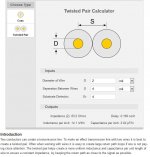
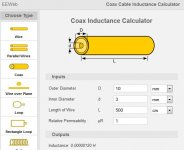
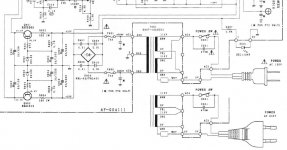
![018f8aa3b389d3bb39b5db8cea744c91[2].jpg](/community/data/attachments/425/425100-2c9dd967947849021683c11367fde0e7.jpg?hash=LJ3ZZ5R4SQ)
![modern-design-pylons2-e1330703344795[1].jpg](/community/data/attachments/425/425106-4e35086c82a8b16ce7123b0fb90c2ec4.jpg?hash=TjUIbIKosW)
